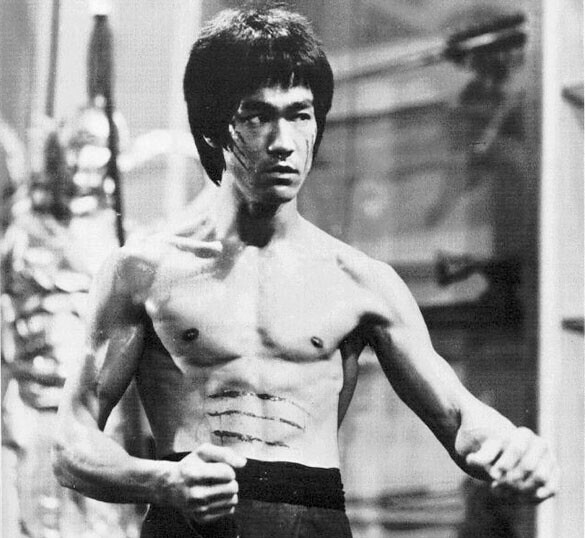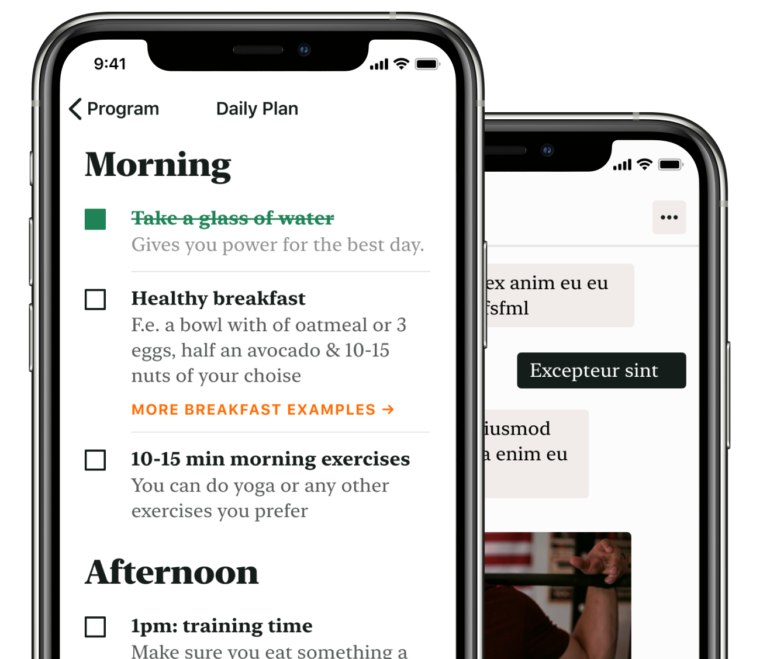Bruce Lee. The Legend. The Dragon. It’s easy to forget that past the glorification of his larger than life persona was simply a man driven by fitness. Underneath the superficiality of his 3-inch punch or one-handed push ups was just a guy whose training helped expand the boundaries of his physical abilities- something we can all strive for and attain in the gym.
Because he was a martial artist, there were many levels to his fitness that made his skill-set well rounded. For now I’ll break down the most apparent form of fitness, resistance training, to reveal some of the principles that developed his iconic physique.
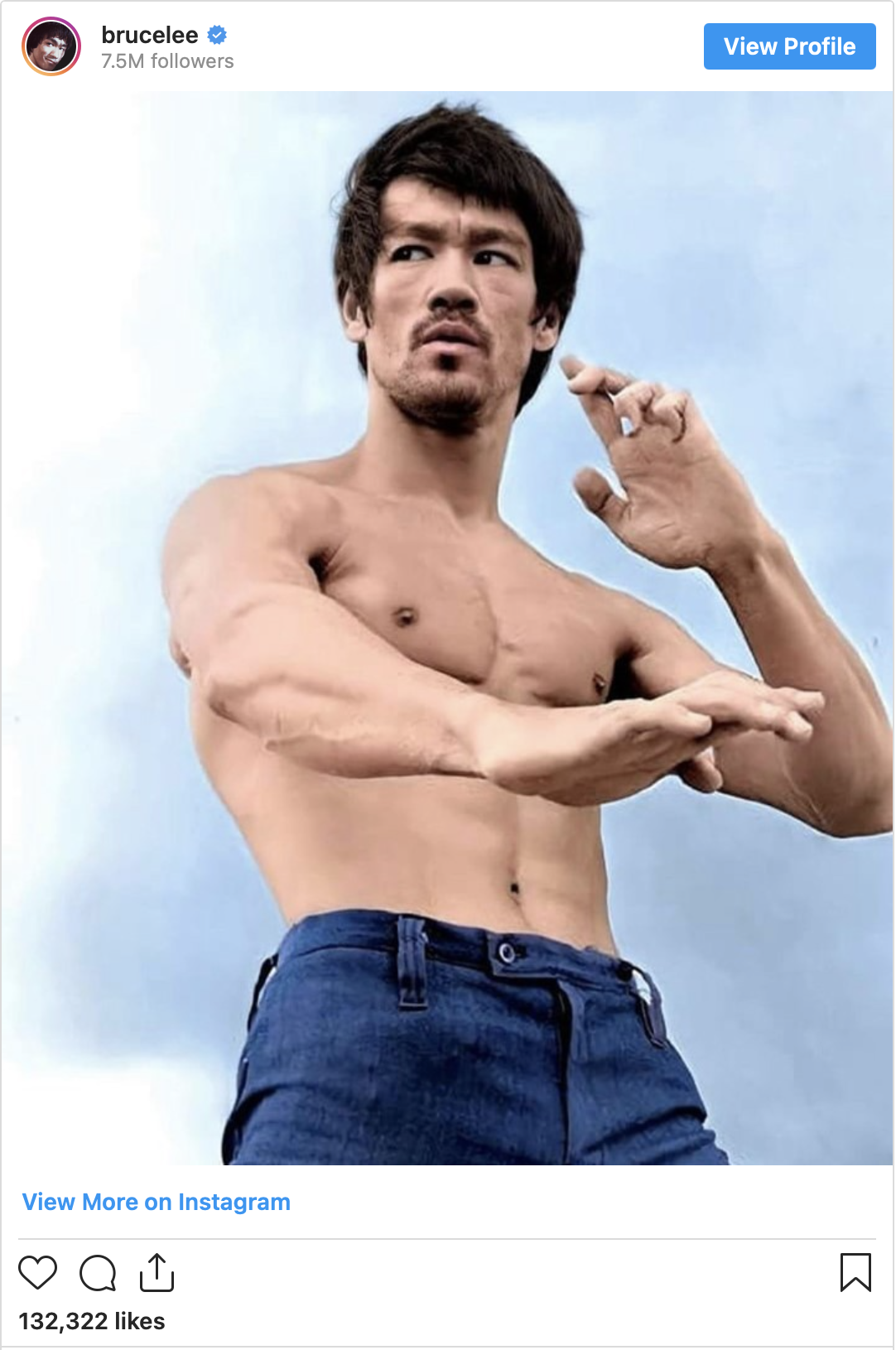
The essence of fitness is to improve the systems of the body, he knew this and used different types of fitness to improve his performance. He recognized that practicing wing chin on his wooden dummy or practicing the first form for hours wouldn’t produce the adaptation his body needed to develop an edge. He believed this to the point where his training regimen in the last 3 years of his life were unrecognizable to that even 5 years prior.
The man was on a cross-training mission; weight training for strength, running and cycling for cardiovascular efficiency, stretching for flexibility, heavy bags for timing and applied power, etc. He lived out on a macro scale what we should apply to our training on a micro scale: that is as our body’s and goals adapt and evolve, we must change and improve the training modes and techniques necessary to meeting these growing demands.
One of the main main staples of Bruce’s training and above average ability was strength. For any sport or martial art, strength and full range of motion are the basis for success. Lee became convinced of this fact after an encounter with a Chinese martial artist in Oakland California, determined to increase not only his strength of stamina and endurance, but muscular strength as well. As stated in Bruce’s film Enter the Dragon:
Sparta, Rome, The Knights Of Europe, The Samurai…All Shared The Lone Ideal: The Honor Of Strength, Because It Is Strength That Makes All Other Values Possible. Nothing Survives Without It. Who Knows What Delicate Wonders Have Died Out Of The World For Want Of The Strength To Survive?
The movie’s villain Han was speaking philosophically, but the pursuit of strength can also be applied to fitness. Multiple studies verify that strength training and muscular power improve running and cycling times as well as lifting performance in a wide range of athletes. As stated in The Application of Measurement to Health and Physical Education- speed also depends on strength…the stronger the individual the faster he can run… moreover endurance is based on strength. There are a few reasons to explain this:
- Strength training improves neuromuscular efficiency, meaning it improves the mind-body connection allowing for faster reaction times and reflexive response.
- Strength training helps develop both slow and fast-twitch muscle fibers, aiding in long distance endurance and many other categories
With strength as the foundation for physical performance, resistance training is the natural option for increasing this area. This type of training offered many benefits; simplicity of movements, adaptability of exercises to all muscle-groups, but for Bruce the fact that his training only took 15–30 minutes to complete 3 times a week really took the cake. Despite his short training time he was still able to achieve outstanding levels of speed, power, muscle development, and physical fitness unlike anything that could be achieved with other forms of training or comparable time.
Bruce Lee’s Early Resistance Training
We have a lot of documentation that give us a glimpse into Bruce’s early resistance and martial arts practices, one of which was well sourced in John Little’s collected notes gathered in the book The Art of Expressing the Human Body.
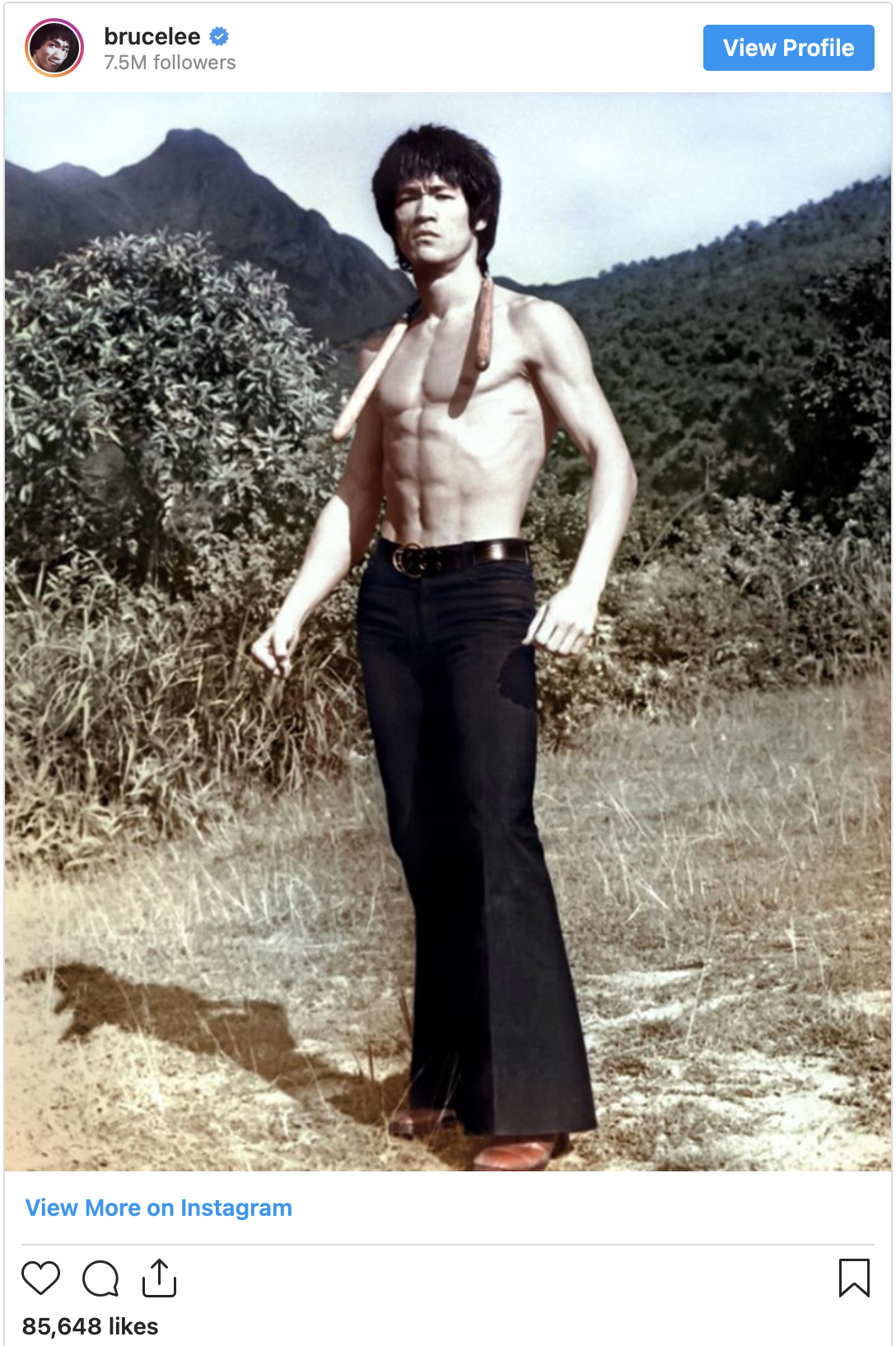
As early as 1965 he was recording his workout routines, one in particular was done at the Hak Keung Gymnasium in Hong Kong
Squat: 3 x 10 (95lb)
French Press: 4 x 6 (64lb)
Incline Curl: 4 x 6 (35lb)
French Press (again): 4 x 6 (35lb)
Con Curl: 3 x 10 (70–80lb)
Two Handed Curl: 3 x 8 (70–80lb)
Tricep Stretch: 3 x 8
Dumbbell Curl: 4 x failure (18lb)
Reverse Curl: 4 x 6 (64lb)
Wrist Curl: 4 x failure (64lb)
Wrist Curl: 4 x failure (64lb)
A few interesting things to note is that:
- Lee would occasionally stop adding weights and ignore repetitions in order to reduce the overall training time of his workouts. To shave time off the clock while still getting some measure of intensity he would perform each rep as quickly as possible which explains the brevity of his workouts.
- In addition to timing his repetitions he also timed the rest in between sets, making a conscious effort to increase his endurance and stamina by reducing the recovery period between sets
- He incorporated reps to failure for his biceps and wrists (which I suspect was to improve his punching power and grip strength)
When you think about it this form of speed training would explain at first glance the light weight he used particularly on his squats and dumbbell curls. I believe a reason he was still able to get such stellar results despite his training time is because he still manipulated training variables to get as much intensity out of the workout as possible.
It’s interesting to note that these days when we talk about manipulating variables like tempo, we usually talk about slowing down the negative in an attempt to increase the intensity during the concentric portion, where as Lee increases intensity by speeding everything up, increasing the muscles time under tension by reducing time at the top of the movement.
Bruce Lee’s Full Body Routine
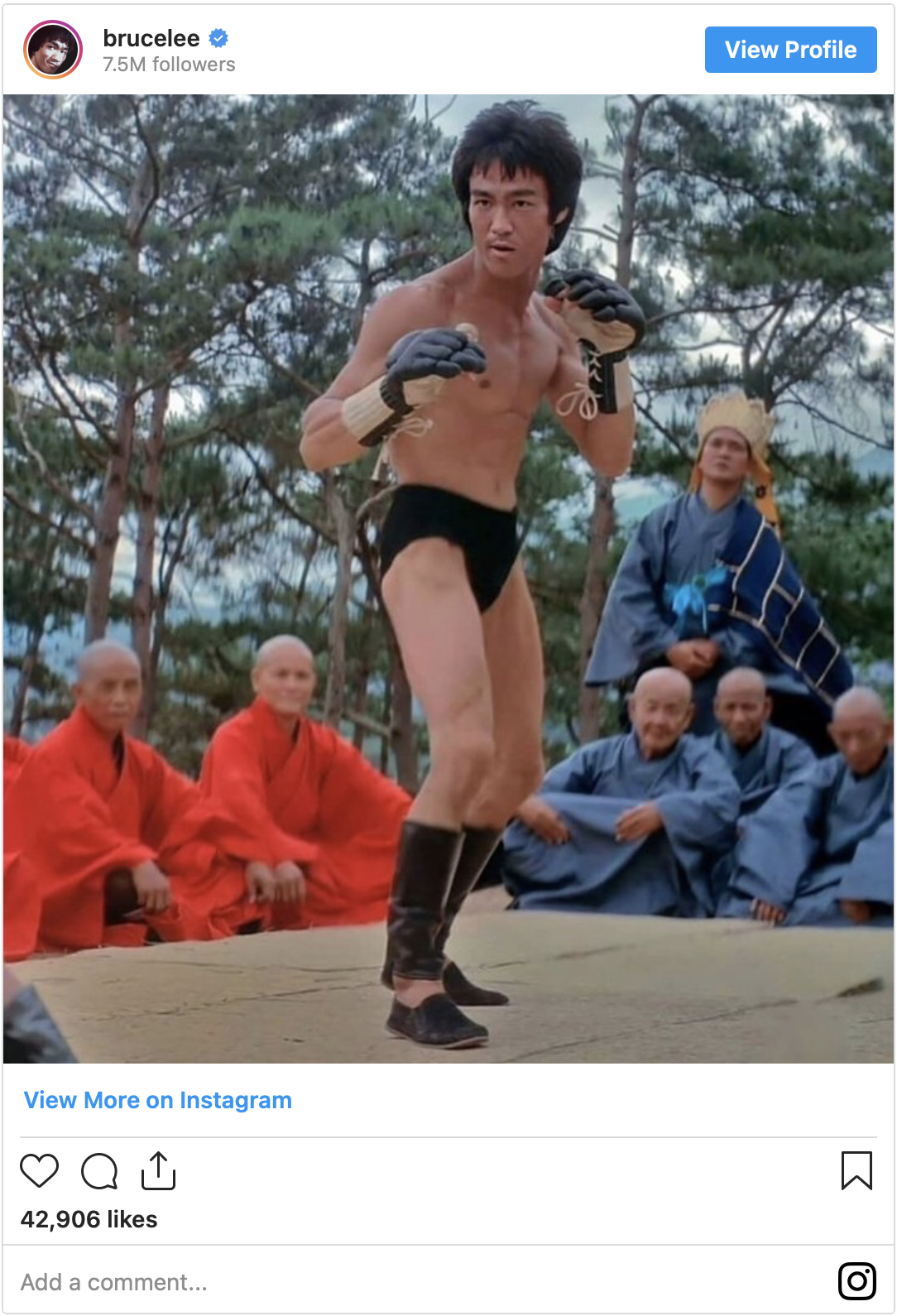
Over the span of ten years, Bruce would continue to alter and shed aspects of his training into a much simpler program as documented in the book The Art of a Expressing the Human Body.
Clean and Press: 2 x 8–12
Barbell Curls: 2 x 8–12
Behind-the-Neck Presses: 2 x 8–12
Upright Rows: 2 x 8–12
Barbell Squats: 2 x 12–20
Barbell Row: 2 x 8–12
Bench Press: 2 x 8–12
Barbell Pullover: 2 x 8–12
He then further reduced his program to what you see below, repeating it three times a week to achieve his iconic look in The Big Boss (1971) and Way of the Dragon (1972):
Clean and Press: 2 x 8
Squat: 2 x 12
Barbell Pullover: 2 x 8
Bench Press: 2 x 6
Good Morning: 2 x 8
Barbell Curl: 2 x 8
By the later phases of his training evolution, his experience and results led him to a few conclusions that we can learn from and incorporate into our own fitness:
Most of us aren’t training to be fighters, however training our bodies (their kinetic chain) completely with the use of compound movements will develop a proportionate physique and a powerful one that works in unison from our feet to our core and all the way through the upper body.
If Bruce Lee’s training by the end of his life could be summed up in two words, they would be simplicity and efficiency. I honestly believe that his level of self discipline and specific goals afforded him the opportunity to down-size his resistance training to the bare-bone, but this can be true for even the casual gym goer.
Real progress in the gym doesn’t necessarily require an ultra complex program, especially for beginners of weightlifting- simplicity can be advantageous. What is often more essential is having the self mastery to train on a consistent basis and an understanding of how to properly use the foundations of training like compound movements (squats, bench press, etc.).
Bruce Lee’s Resistance Circuit Training
The last form of resistance training of his I will mention is what is rumored to have developed his iconic look for Enter the Dragon, though he was consistently training for years prior.
This growth is credited to his Marcy Circuit Trainer he purchased in 1972. It was essentially the cable machine you find in most gyms today which gave Bruce the variety to perform many different types of exercises from a single station.
This machine went hand-in-hand with his PHA strategy, also known as Peripheral Heart Action. This form of training was reportedly Bruce’s favorite, a method in in which you keep the blood circulating throughout the body instead of gathering in a single muscle group. In a nut-shell it emphasizes full body circuits over working individual muscles via sets and reps of a single exercise.
Over Pull Up: 30 seconds
Seated Leg Press: 30 seconds
Bilateral Alternative Hip/Knee Extensions: 30 seconds
Shoulder Press: 30 seconds
Standing Calf Raise (Using Shoulder Press): 30 seconds (different foot positions)
Alternating Cable Curl: 30 seconds
Bench Press: 30 seconds
Deadlift: 30 seconds
Kneeling Pushdown Behind Neck: 30 seconds
Tricep Pushdown: 30 seconds
Sprint: 1.5 minutes
Standing Wrist Roller: 1 minute
Neck Flexion/ Extension: 1 minute
All of these different types of workouts are a lot to take in, but in my opinion there are a few common threads that unite them that we ourselves can internalize. For one:
The incorporation of full body workouts
He desired to work the body as a whole, unified, vessel through the use of compound movements and full body workouts. In his eyes compartmentalizing the body by over-emphasizing training splits could lead to muscular imbalances that would hinder its fighting potential. By training the entire body in a single workout he was able to train each body part evenly over multiple days of the week.
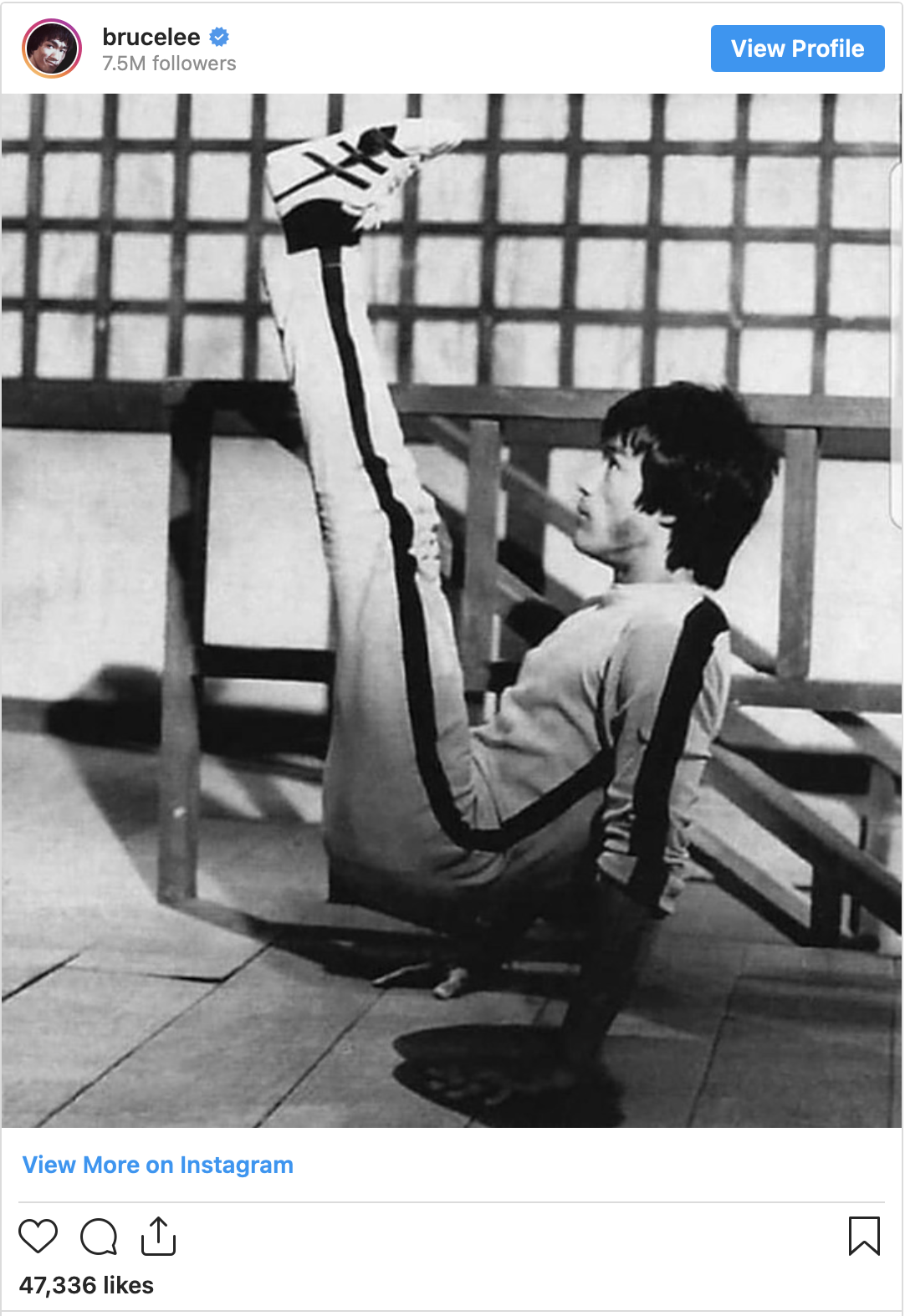
Build strength through intensity, the foundations for growth and development
Bruce Lee recognized that one of the only ways of improving his prowess was by strengthening his muscles, which could only be achieved through intense weightlifting.
While he didn’t increase his strength in the conventional way of progressively increasing weight, he manipulated other training variables like rest, reps to failure, and tempo in order to create conditions of intensity that would change his body.
In whatever training program you choose, always be conscious of intensity and how you can progressively increase it to suit your goals. Remember- you can’t grow without it.
His training was specific to his needs
A lot of the exercises he did, for example his over-emphasis of bicep, fore-arm, and lat exercises were necessary adjustments for wrist strength and the transference of punching power that traveled through his body.
When it comes to your own workouts there may be areas that you have to train harder than others to reach your goal. Just like Bruce be mindful of your body as a whole, but also what role each individual part plays towards your goal. If certain areas need more attention, address them.
Bruce didn’t put limitations on his training
This is possibly the most important point because without his persistence to overcome plateaus in his training he never would’ve risen to such profound heights. Look back to his different workouts; they chronicle the ethics of a man who was willing to change and evolve the way he trained to surpass the martial artist and fitness icon he was yesterday.
To grow our bodies it will also require us to expand our minds and our understanding of techniques and to solve the problems we face. My sincere hope is that like Bruce Lee you too will continue to grow into the greatest type of athlete and fitness enthusiast- one without limits.
